Modesto, California

- Happiness Rank: 91st
- Metro Population: 829,992
- Average Commute Time: 31 minutes
Located in the heart of California's Central Valley, Modesto deals with a challenging commute despite its peaceful neighborhoods and vibrant agricultural community. Traveling around the city can be quite a challenge for the almost 830,000 residents, with an average commute time of 31 minutes, which is nearly 4 minutes longer than the national average. StanRTA provides a network of two dozen bus routes, but many people still prefer the familiarity and convenience of using their own vehicles.
If you're looking for other options, StanRTA offers quick services to important transportation hubs such as the Altamont Commuter Express (ACE) train station and BART station. Moreover, commuters have additional mobility options through connections to Amtrak. Even with these efforts, commuters in Modesto face long travel times due to the city's ongoing struggle to reduce congestion in its bustling urban environment.
Los Angeles
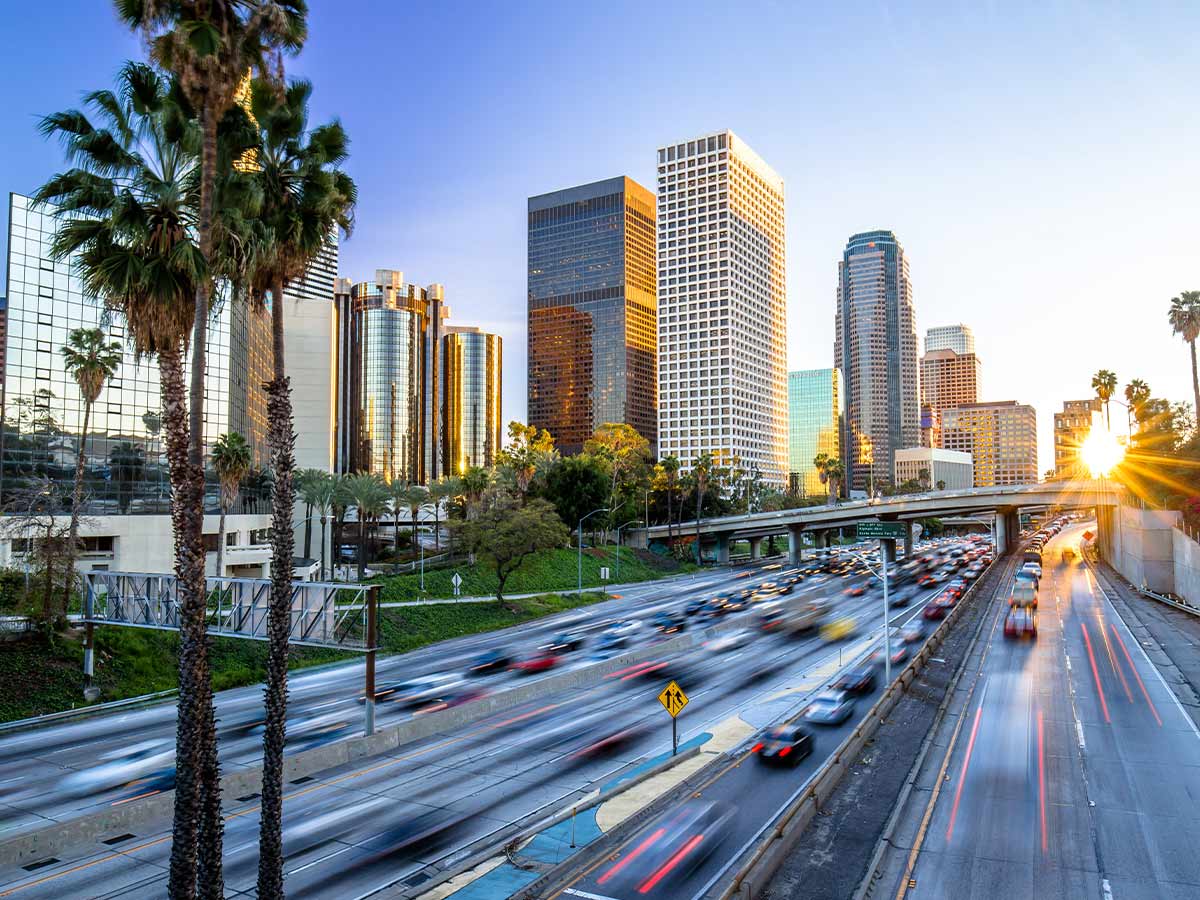
- Happiness Rank: 64th
- Metro Population: 18,628,215
- Average Commute Time: 31 minutes
The vast West Coast metropolis of Los Angeles offers a wide range of entertainment options, cultural diversity, and economic prospects, but in addition to its diverse attractions, Angelenos have infamously long commutes, which take an average of thirty-one minutes — a fact that is also reflected in Modesto, California. Even with a well-developed public transit infrastructure that includes buses, light rail, subways, and shuttles, most Los Angeles residents prefer the comfort of their own vehicles, which adds to the notorious gridlock in the city.
By linking important tourist destinations and commercial districts, the Los Angeles Metro System, which covers the whole LA region, seeks to reduce some of this traffic. In addition, the DASH bus system, run by the Los Angeles Department of Transportation (LADOT), serves downtown districts, however it is not as dependable or frequent as other choices. With its famous metropolitan scenery as a background, navigating the busy streets and highways of the City of Angels is more than just a daily test of patience and persistence.
Boston
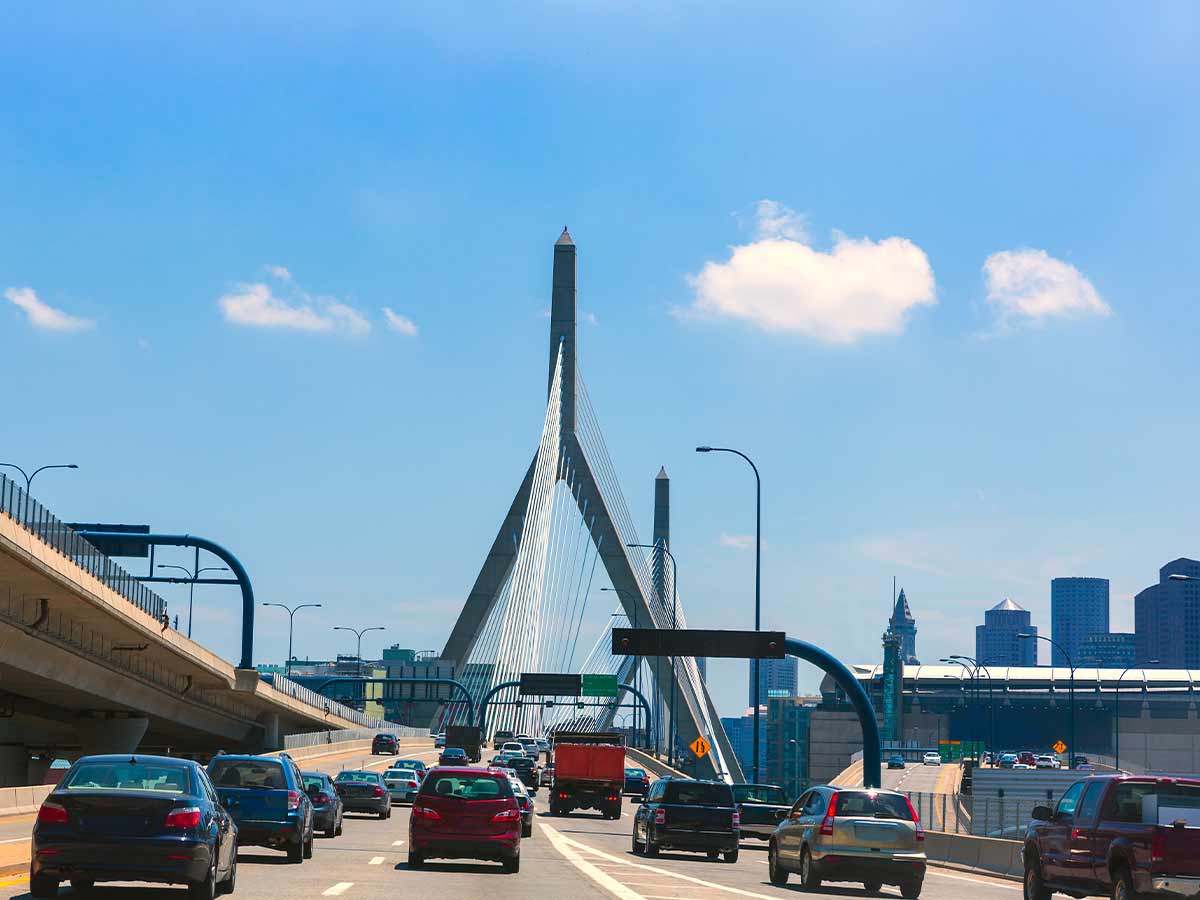
- Happiness Rank: 58th
- Metro Population: 4,912,030
- Average Commute Time: 31.1 minutes
Smack dab in the middle of New England, you'll find both old and new in Boston. Commute times in Boston are around 31 minutes. Navigating Boston can be challenging due to the city's non-grid-based street layout. Locals often opt to walk or ride bikes instead of driving. When it comes to public transportation, the Massachusetts Bay Transportation Authority (MBTA) is second to none.
The MBTA provides residents of Boston and the surrounding metro area with a network of trains, buses, and ferries, known affectionately as "the T,". The city's Commuter Rail, boasting 137 stops, serves as a vital link between Boston and the surrounding communities of eastern Massachusetts and Rhode Island, providing commuters with a reliable and extensive transportation network to navigate the bustling streets of Beantown.
Chicago

- Happiness Rank: 83rd
- Metro Population: 9,607,711
- Average Commute Time: 31.3 minutes
Chicago is the Midwest's cultural, economic, and urban innovation powerhouse. With a metropolitan population of 9.6 million, Chicagoans and those in the neighboring suburbs have an average commute of 31.3 minutes. Parking and traffic congestion plague Chicago's packed streets, forcing many people to utilize public transportation. The Chicago Transit Authority's (CTA) aka the L trains run in all directions.
The L gives passengers easy access to many essential locations. The Metra train system connects downtown Chicago to its extensive northern, western, and southern suburbs. The CTA bus system provides convenient routes, including the Night Owl service for late-night city travel. Chicagoans use the city's extensive bike lanes and Divvy rental bike stations to commute sustainably and easily.
Atlanta

- Happiness Rank: 53rd
- Metro Population: 6,026,734
- Average Commute Time: 31.8 minutes
Atlanta is a bustling metropolitan area that is full of energy and innovation, yet like evryone on this list it faces transportation challenges. With a metro population of 6 million, residents here experience an average commute of 31.8 minutes, maneuvering through a complex freeway system. It's a real pain dealing with all the traffic on the highways causing constant delays.
In order to address this issue, MARTA offers rail and bus services as alternatives to driving. The Atlanta Streetcar connects downtown with Sweet Auburn, offering an environmentally friendly mode of transportation. Despite facing challenges, MARTA and the Streetcar showcase Atlanta's dedication to enhancing transportation options and ensuring it remains a dynamic center in the Southeast.
Vallejo and Fairfield, California
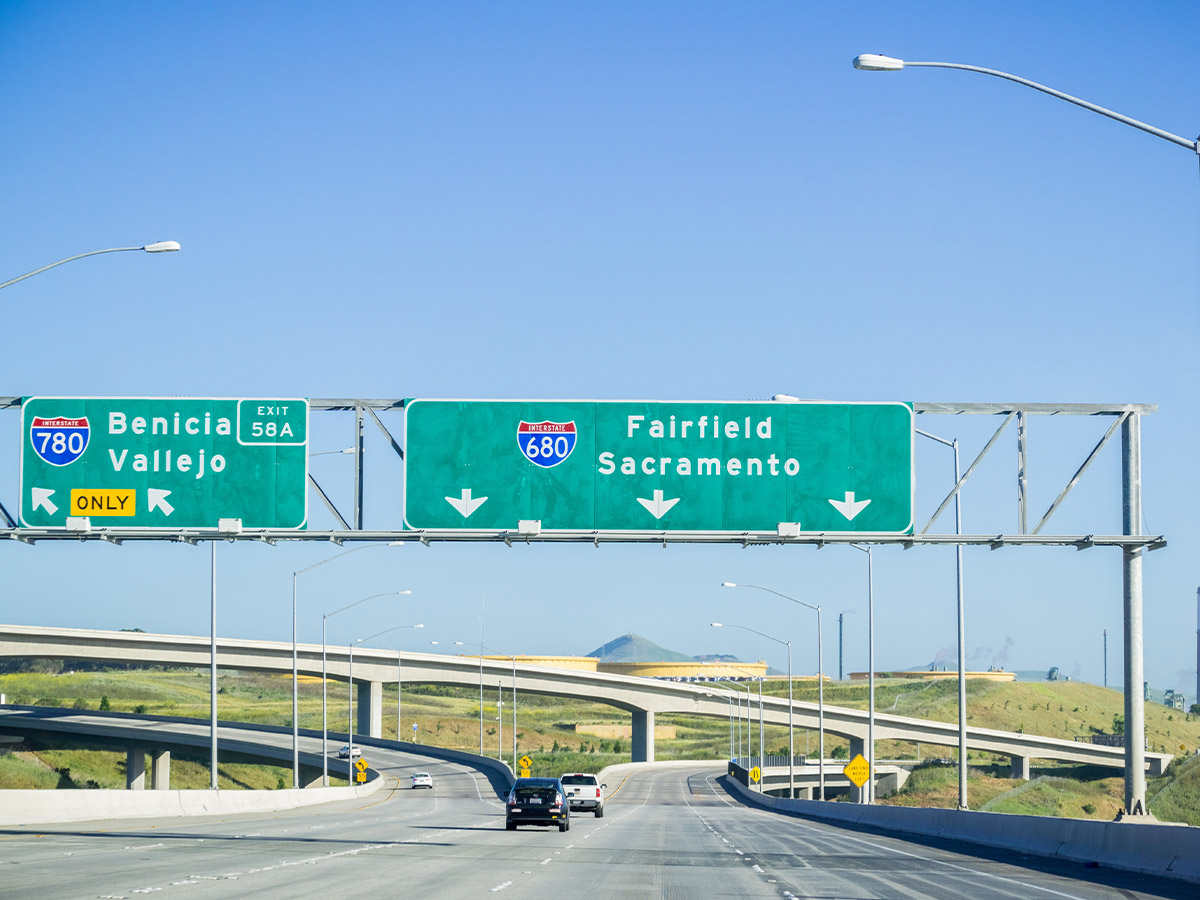
- Happiness Rank: 135th
- Metro Population: 451,432
- Average Commute Time: 33.2 minutes
Sweetly sitting between Sacramento and San Francisco, Vallejo and Fairfield boast a combined metro population exceeding 450,000. Commuters in this region face a 33.2-minute average commute time, slightly above the national average. Vallejo offers varied transportation options, including a scenic ferry system connecting to nearby Bay Area cities and the SolTrans bus system.
Despite the obstacles connected with transportation, Vallejo and Fairfield remain popular locations due to their closeness to major metropolitan areas and beautiful suburban lifestyle. Commuters in the center of the bustling Bay Area have more connectivity and convenience because to the region's numerous transportation options, which include buses and ferries.
San Francisco
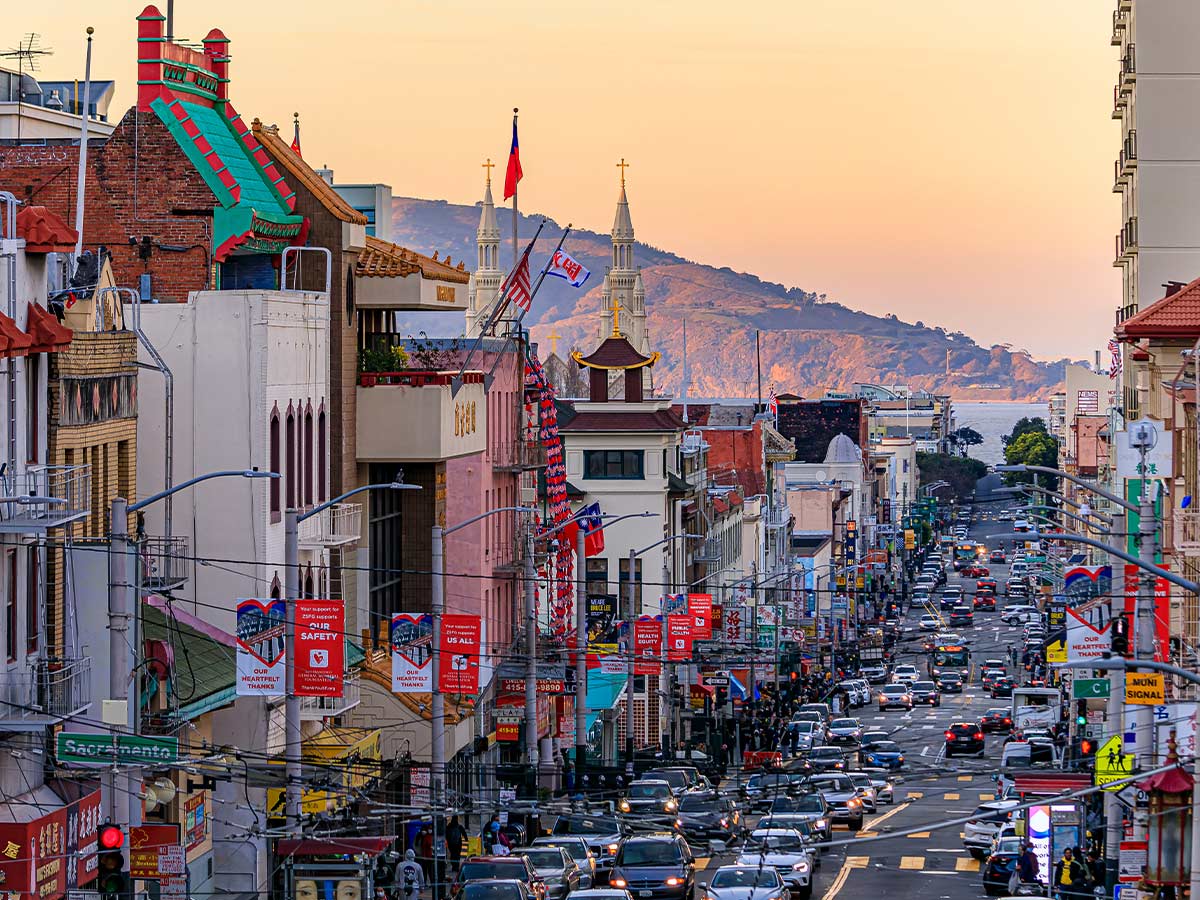
- Happiness Rank: 7th
- Metro Population: 4,725,584
- Average Commute Time: 33.4 minutes
San Francisco is known for its famous landmarks and varied neighborhoods that draw in both locals and tourists. However, the city's average commute time of 33.4 minutes highlights some of the difficulties faced by residents. People here usually use their own vehicles to get around the city, but there are also buses, streetcars, and cable cars provided by the Municipal Transportation Agency (Muni).
Bay Area Rapid Transit (BART) is crucial for commuters in the area. Bay Wheels bike share and the ferry network provide eco-friendly transportation options. Getting around San Francisco is a breeze thanks to its various transit options that connect the city with the Bay Area, overcoming the challenging terrain.
Washington, D.C.

- Happiness Rank: 85th
- Metro Population: 6,332,069
- Average Commute Time: 34.3 minutes
Washington, D.C., the capital of the United States, mixes vibrant metropolitan life with historical significance. Even with a strong public transit system managed by the Washington Metropolitan Area Transit Authority (WMATA), a lot of residents still prefer using their own vehicles. This has resulted in a whopping 34.3-minute commuting time for the inhabitants.
The Capital Bikeshare program offers environmentally friendly options for both locals and tourists. In this ever-evolving environment, where the old meets the new, transportation choices reflect the city's dedication to being accessible and eco-friendly, guaranteeing smooth connections for its 6.3 million metro residents as they move through the busy streets of the nation's capital.
Stockton, California
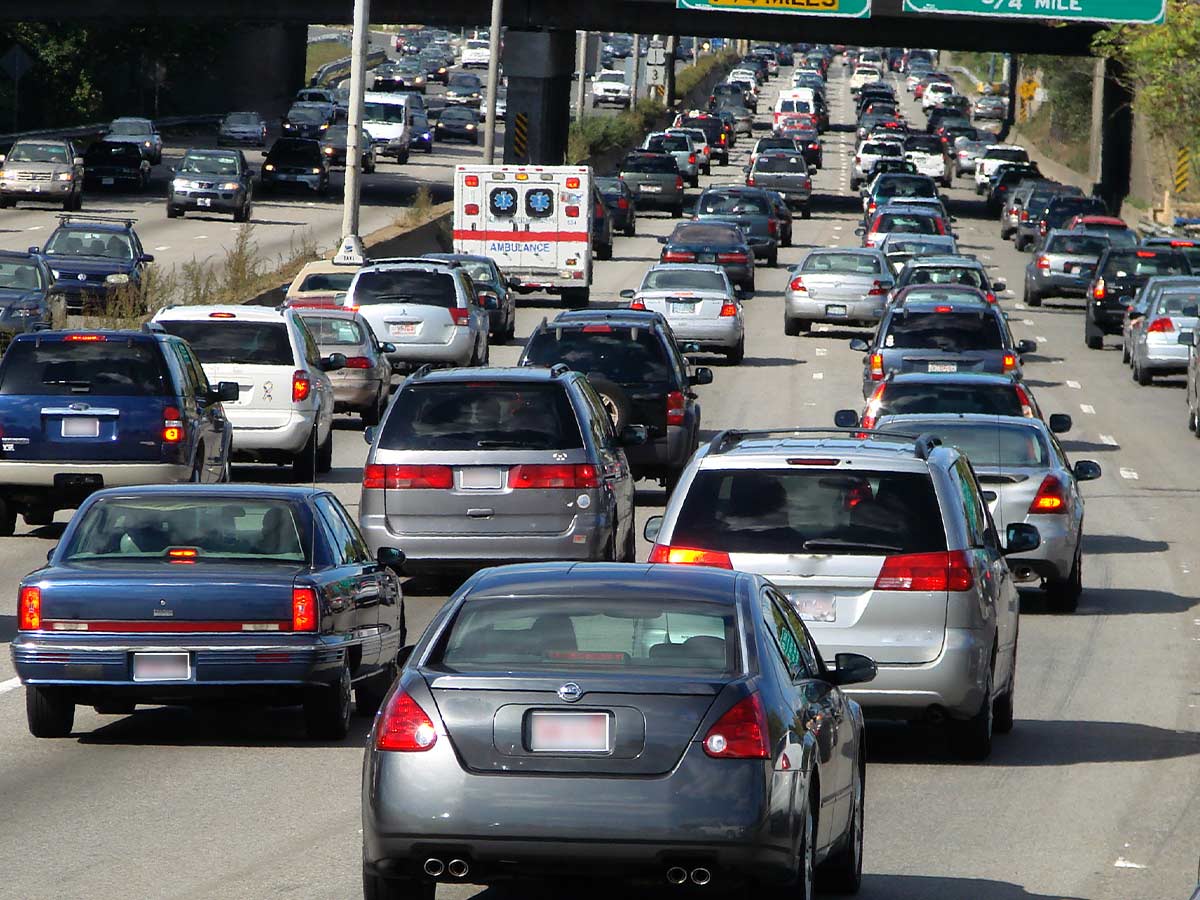
- Happiness Rank: 111th
- Metro Population: 771,406
- Average Commute Time: 35.2 minutes
Stockton, California is located in the heart of the San Joaquin Valley and has an average commute time of 35.2 minutes for its 771,406 residents. During rush hours, congested roads along Interstate 5 and Highway 99 are a common sight as most people choose to drive their own vehicles to and from wherever they are going.
The San Joaquin Regional Transit District (RTD) runs buses within San Joaquin County to connect Stockton and nearby communities in order to meet transportation needs. These buses connect to the Bay Area Rapid Transit (BART) system, providing access to San Francisco and other areas. Stockton's transit options prioritize mobility and accessibility, making it easier to navigate the bustling San Joaquin Valley despite traffic challenges.
New York City
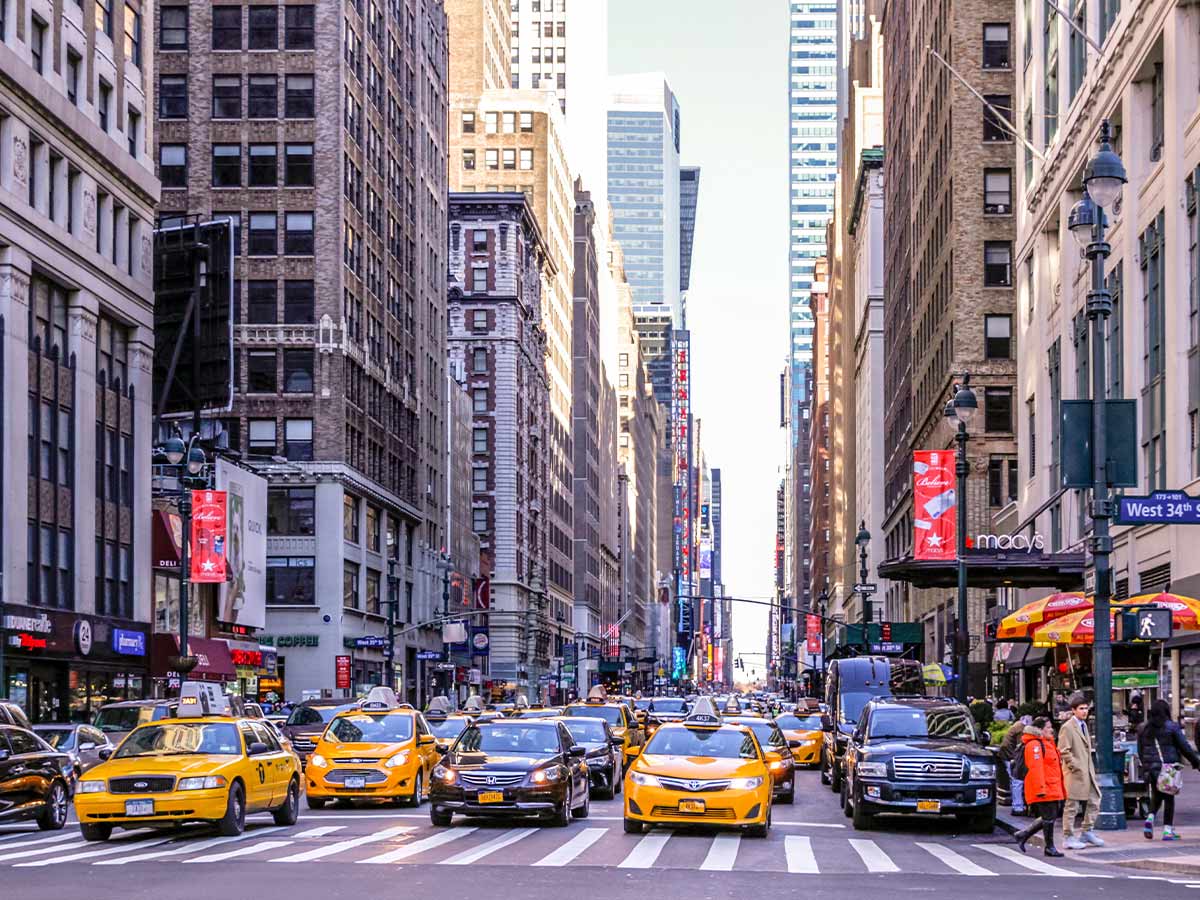
- Happiness Rank: 57th
- Metro Population: 20,968,258
- Average Commute Time: 36.4 minutes
New York City is dealing with an average commute time of 36.4 minutes for its massive population exceeding 20.9 million. Residents really appreciate the public transportation system in the area, which is backed by the comprehensive Metropolitan Transportation Authority (MTA) network of subways, buses, and ferries, despite the well-known traffic issues.
The MTA plays a crucial role in connecting the city's five boroughs and neighboring states, showcasing NYC's dedication to ensuring people can move around easily. Even with obstacles, New York City's transit system continues to be a crucial resource, solidifying its reputation as a thriving hub of opportunity and cultural richness.
 Author
Jennifer Freehill
Last Updated: April 25, 2024
Author
Jennifer Freehill
Last Updated: April 25, 2024